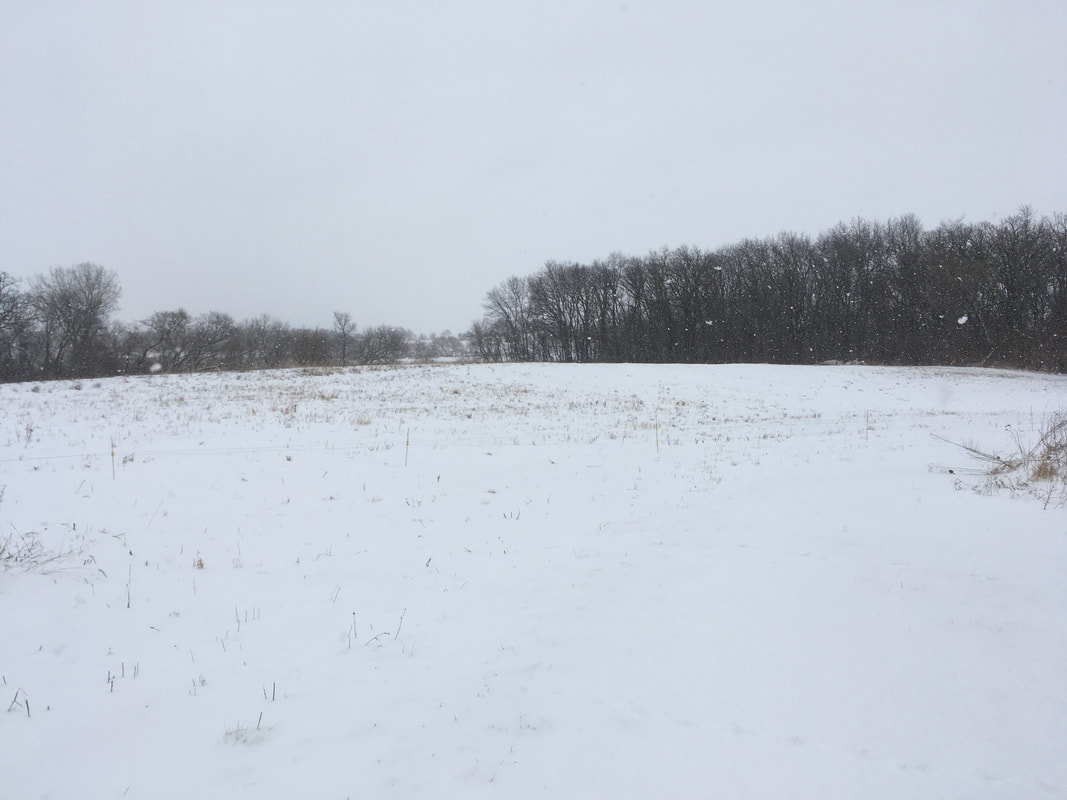|
Over the past few months, I told several new customers that I would be ready in the early Spring to take orders for Fall 2018. The calendar tells me that I need to start nailing down how many hogs I'll raise this year, but it doesn't feel like Spring at all, more like —Apriluary. (The above photo is from this morning)
Late season winter wonderland aside, I am taking orders for the fall. If you are new to the process, here's how it works: If you intend to order a whole or half hog or 25lb box for the fall, please send your deposit. I don't actually cash the deposits until right before I purchase pigs, but the deposits give me a baseline of demand. Please make check out to Odyssey Farm and mail to: Odyssey Farm, LLC 5586 Country Rd N Sun Prairie, WI 53590 For more details, see the Ordering or Retail Price List pages Thank You for your support. Ryan
0 Comments
Saying NO to Non-GMO
When I started in 2016, I described my feed program as using organic, transitional organic, or Non-GMO feeds. I mentioned Non-GMO feeds just in case I ran out of organic inputs. Sure enough, in 2016, I had to buy Non-GMO feed to finish out the hogs when I couldn’t source any more organic feed. I hated doing that. Feed is the greatest expense in raising hogs. They eat like pigs. (Yup, had to say that, even if you saw it coming). Higher quality feed is usually more expensive, so a majority of pastured pork producers feed Non-GMO grain. I get that. What drives me batty is when Non-GMO feed gets talked up like a great thing—as if it’s “Organic Lite”. It’s nowhere near it. Non-GMO production is chemical-intensive, industrial agriculture circa 1993. Non-GMO production still uses glyphosate-based herbicides (Round-Up) and synthetic fertilizers. Glyphosate kills weeds, but it also kills the beneficial soil life that would normally make nutrients available to plants in exchange for root secretions (exudates) that feed the microbes. Instead of building and feeding the soil that would feed the plant, industrial agriculture has farmers feeding the plant directly with synthetic fertilizers such as Anhydrous ammonia. Anhydrous ammonia is made from natural gas, which has become “cheap” again thanks to fracking. You see where all this is going. I want no part of it. Producers raise what they raise and use the techniques they use because that’s where they are and that’s what pencils out for them. I understand that, but I’m also a consumer. Looking at it from the consumer’s perspective, when I read or hear the proud declaration that someone uses Non-GMO feeds, it sounds like bragging that their overseas sweatshop labor is morally superior because they’re no longer exploiting children. For 2017, I drew a line in the soil: I only used organic feed or my own transitional-organic corn. I think I raised better pork as a result. I’ll do the same thing for 2018. Sticking to organic and transitional organic grains means I’m giving my animals a healthier product, and thus healthier pork for my customers since, to quote Michael Pollan, “you are what you eat eats”. |
Ryan Erisman
Former Marine Infantry Officer. Iraq Vet. Interested in Regenerative Agriculture at any scale. Archives
February 2023
Categories |
Odyssey Farm, LLC.
The Odyssey Farm Journal
Odyssey Farm, LLC
|
Dane County Climate Champion
|
608.616.9786
|
Copyright © 2016

 RSS Feed
RSS Feed